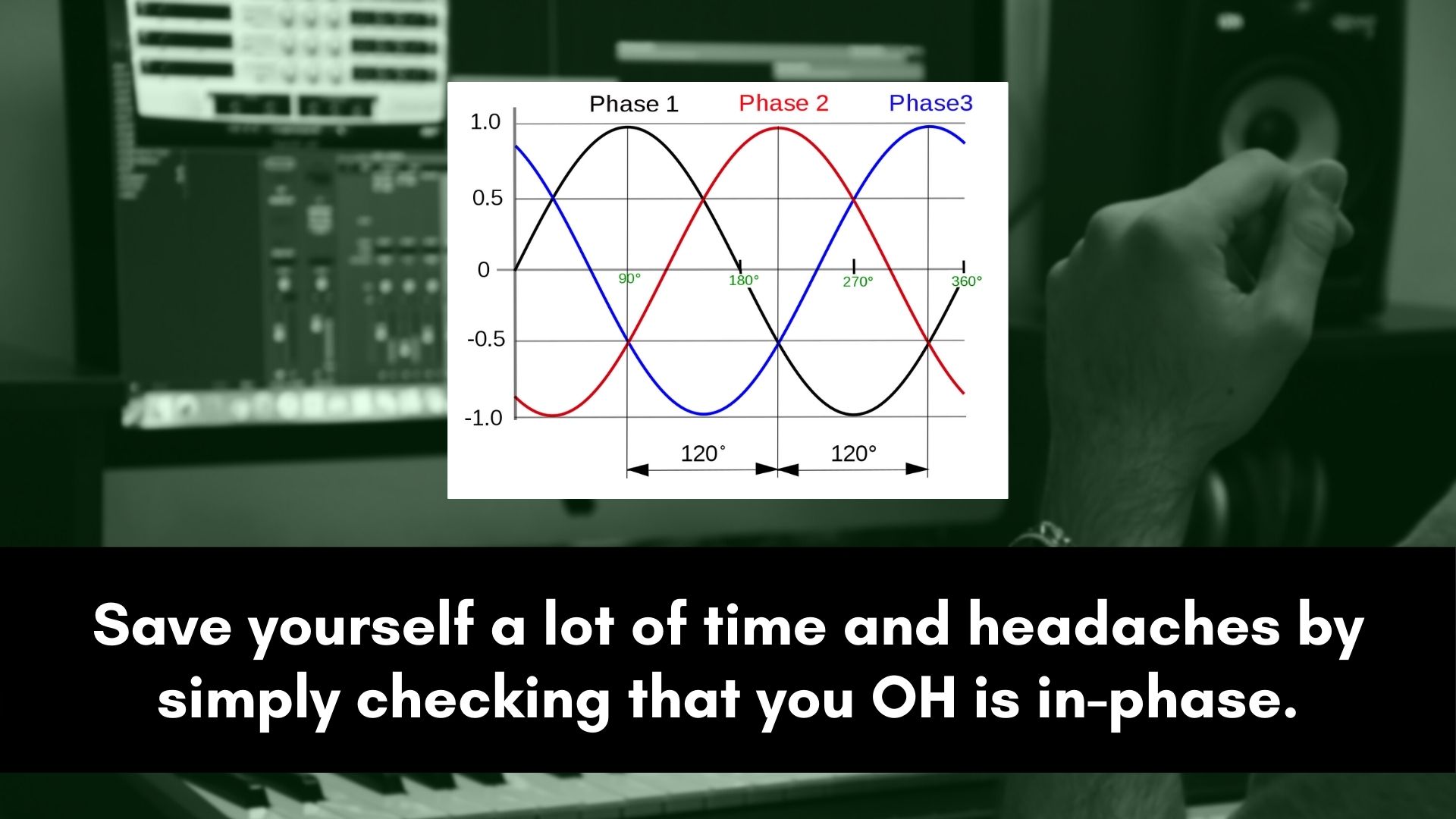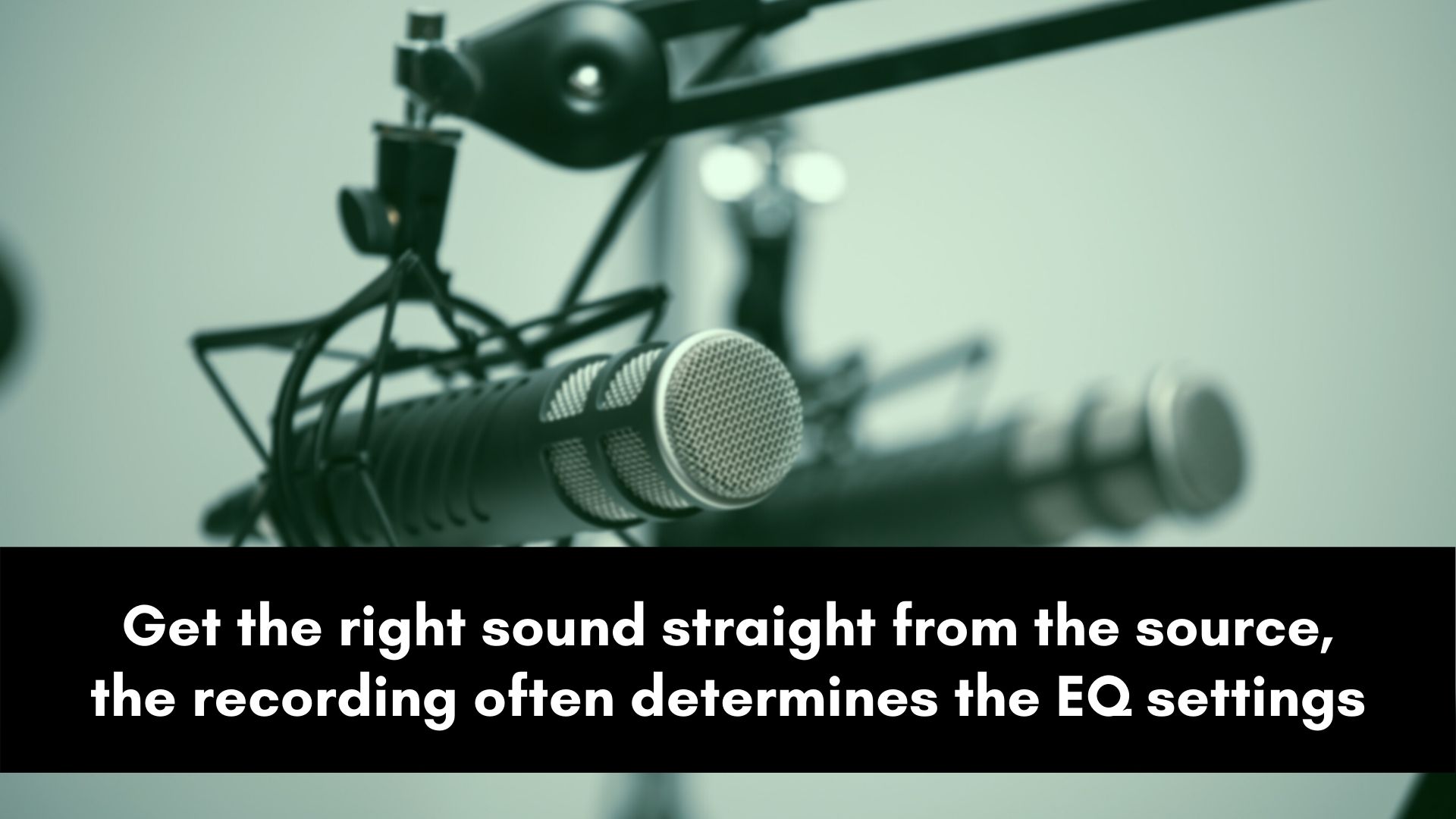Today you’re not only going to learn how to EQ drum overheads but you’ll be able to apply these techniques to different projects in various genres.
When it comes to mixing overheads it is important to diagnose whether your OH (overheads) needs an EQ or not.
In some cases, especially when they’re well recorded, a good volume balance and a multiband compressor in problematic frequencies will get the OH sitting well in the mix.
So, it is usually helpful to have a clear vision of what you want to achieve with the overheads before jumping for the equalizer.
You can use the OH track to help the snare pop in a mix. In many cases, they're used for cymbals or even to brighten up the drums.
They can be used for various reasons.
How to EQ Overheads
Once you've listened to the song a couple of times you should have a clear vision of what role you want the overheads to play on the track.
Next up you'll need to check if there are any phase issues.
Check Phase

One of the most important things to check when you're working with live drums is Phase. If there are any phase problems the drums will cancel each other and struggle to cut through the mix.
No matter how much EQ you apply they’ll always fall flat.
So, it is very crucial to correct any phase issues between the overheads and the individual drum tracks.
This doesn't only apply to live drum recordings only. Phase can also occur when you're layering multiple sounds together to create one big sound.
Always take a moment to check that your separate drum tracks are well aligned and they’re not canceling each other.
Also, flip the polarity to check if there's any phase cancellation.
This process will save you a lot of headaches and a lot of time.
The Recording Does Matter

How you choose to record the overheads has a big influence on the EQ settings. This also includes things such as the pre-amp, microphone, placement, etc.
So, don't just record with the mindset of thinking that you'll be able to get the right sound during mixing.
That's a big mistake beginner engineers make.
It's always recommended to spend more time getting the right sound from the source instead of relying on post-production.
That's how you get to compete with some of the best engineers out there.
But if you take shortcuts, then don't get surprised when your songs can't compete with other commercially successful songs.
Take a moment to do some research to learn more about recording overheads, especially in the same genre that you're working on.
Also, check some mixing tutorials to see what engineers are frequently fixing and see if you can prevent that during the recording stage.
The point is, do whatever it takes to get the right sound and balance from the source.
How To EQ Overheads

In this section, I’ll suggest some frequencies that are often problematic and some good ones to help you find the best EQ settings for the overheads on any mix.
The most common way is to cut the low-end to avoid phase issues between the kick and the overheads.
Since the OH mic is normally placed above the drum kit, it usually picks up the sound of the kick drum a few milliseconds later.
That can cause phase problems and this is why most engineers would rather remove the lower frequencies and use the OH track for cymbals and other high frequencies.
The issue I have with that approach is that the overheads can sound too brittle and thin.
If this is the sound that you’re going for and it works for the drum mix then use this method.
I often find that fixing phase cancellation makes things much easier. This means aligning audio files manually and flip the polarity wherever necessary.
Once the phase is fixed then I can focus on getting the OH track to play a bigger role in the mix.
Here’s my overhead eq cheat sheet. These are frequencies to look out for when you eq drum overheads.
Let’s start with a few problematic frequencies that you may choose to remove or not. But at least you’ll know where to look if ever you want to remove them.
I usually find that a linear phase EQ is usually a good choice for this process.
- Anything below 40Hz is usually rumble
- The area between 250-500Hz can often be muddy
- In the midrange around 800Hz-1kHz, you may find honky frequencies
- Harshness can be found between 2-6kHz (create a couple of narrow cuts [not too many though] in this area if you’re going for a smoother sound)
Those are normally the problematic frequencies on overheads. You don’t need to cut these frequencies all the time, only when it’s necessary.
Now let’s look at some good frequencies that you can boost to enhance the sound of the overheads.
- A shelf boost around 60-100Hz can add some weight to the entire drum kit.
- Boosting around 3-5kHz can add presence to a dull and muddy overheads track(s).
- If the OH track needs shimmer and sheen then a boost around 8kHz should do the job.
- To add more air and sparkle (brightness) you can use a shelf boost at around 8kHz.
These are usually the frequencies I boost on the overheads especially if the kick and snare are struggling to cut through the mix.
However, if the overheads track is there just for the cymbals and high frequencies then all you might need is a low-cut and a good volume balance.
It’s crucial to know when to cut or boost.
For instance, if the overheads are dark and muddy then the goal is usually to add some sheen and sparkle. When they are too bright then it’s normally a good idea to do the opposite.
It’s really easy to find yourself over equalizing the OH track so always remember that less is more.
Whenever you get stuck just listen to what the entire drum kit is missing then see if you can use the overheads to fill the gap.
Wrap
I trust that this post will help you come up with the best eq settings for the overheads on all the mixes that you work on.
It would be great to hear your thoughts about this tutorial, let me know in the comments section below if this did help you finally figure out how to eq drum overheads.
Questions are always welcome as well, you know I always respond.